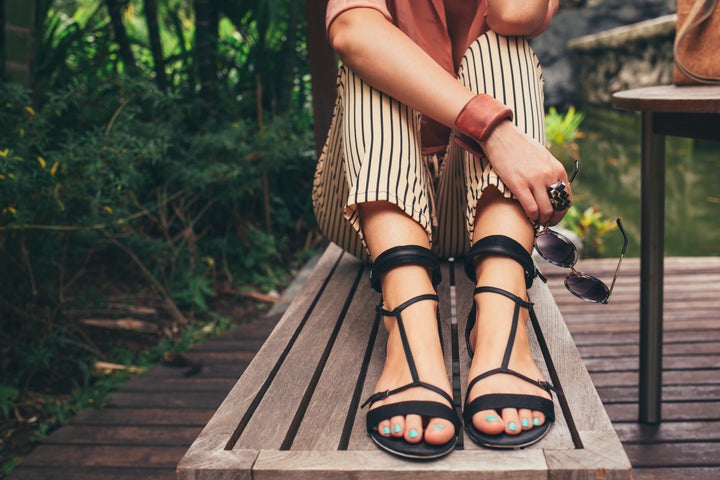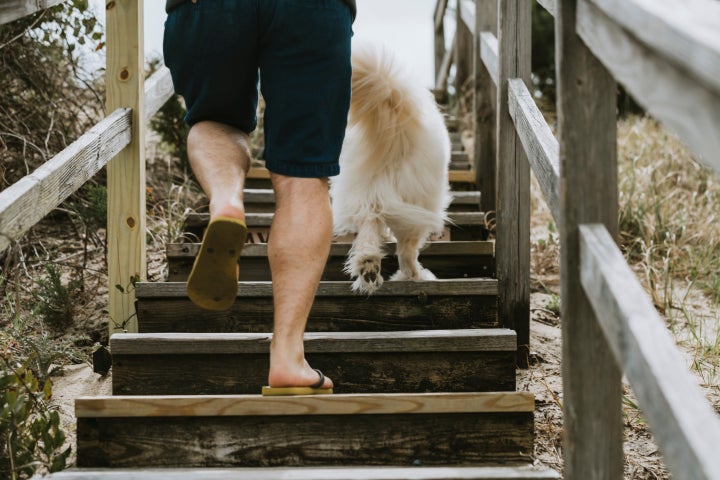A favorite summer footwear option is the flip-flop. What’s not to love? It’s easy to put on and take off. It’s often waterproof. You can wear your flops to the pool, or to get the mail very quickly, or to the beach when you need an easy-to-clean option.
But what happens when you start wearing flip-flops more frequently? Maybe to the grocery store, or to a cookout where you’ll be standing around with friends, or even to work. They might be comfortable, but are they actually safe and supportive enough to wear for those longer stretches?
According to Gerardo Miranda-Comas, an assistant professor in the department of rehabilitation and human performance at the Icahn School of Medicine at Mount Sinai, the shoes you choose are an important component in making sound physiological choices.
“Everything is connected,” he said. “Footwear is only one component ... but the footwear you choose will affect the rest of the body.”
Factors to consider before deciding which shoes to wear

Some footwear can change your posture quite substantially, including flat sandals. The type of foot you have ― whether it’s flat or arched ― also matters, said James Holmes, an associate professor of orthopedic surgery and a foot and ankle specialist at Michigan Medicine.
People who are flat-footed need to be particularly aware of what they wear on their feet. The condition ― and your choices of shoes ― can certainly affect your posture, depending on whether your legs curve in or out at the knee. “Both can lead to knee and hip pain,” Holmes explained.
When it comes to maintaining healthy posture and preventing pain, comfort is the most important factor, Miranda-Comas said.
“The foot affects the ankle, the ankle affects the knee, the knee affects the hip, and the hip affects the spine,” he said. “The body wants to be aligned, and as central as possible; it will adjust for that. A layer of shoe can help stabilize the body and improve alignment in general.”
This rule goes for flip-flops, yes, but also for all shoes. High heels are something you should also be wary of when it comes to prolonged wear.
“When you’re wearing a heel, you’re going to end up bending the knee more to keep your center of gravity,” Holmes said. “As a result of bending the knee, you’re going to have to bend a bit at the hips, too. You also have to compensate for the shape of the shoe in your back.” This can lead to a slew of problems, including back pain and forefoot issues.
Whether you’re flat-footed or have a high arch, choosing footwear with an arch that matches your natural arch can help add a little extra support while standing or walking. This will support the body overall.
Not sure what type of foot you have? Runner’s World suggests trying a simple footprint test for determining your own arch, which essentially involves getting the bottom of your foot wet and stepping on a surface like cement to see your shape.
When in doubt, though, or when experiencing back, knee or hip pain you think might be related to the shape of your foot, talk to an orthopedic specialist.
It’s also important to remember that “flip-flops are not made for you to do a lot of walking on” and they are “not made to be worn all day,” Miranda-Comas said. They’re also not going to “correct an alignment issue” you might be having with the arch of your foot. (Just think about how easy it would be to twist your ankle on uneven terrain or by simply getting the flip-flop caught on something ... you get it.)
There are potential small perks of flat sandals

All that being said, there is some scientific evidence to suggest shoes like flip-flops can help your feet in some cases.
In one Auburn University study, researchers compared the movement of people in flip-flops with people in athletic shoes. Flip-flop wearers hit the ground with less vertical force and did not lift their toes as much as those who had on tennis shoes. This altered the normal movement of their bodies, resulting in shorter strides and a greater back-and-forth ankle motion.
It sounds bad, right? But those micro-movements might not be the worst thing in the world ― as long as you’re not trying to protect your foot from injury or doing the sort of running where it’s easy to lose an unsecured shoe. Flip-flops are not that far off from barefoot walking, and scientists are starting to note that there are keen differences in populations who do and don’t regularly use footwear.
“If you look at populations that don’t wear shoes, they have fewer issues like bunions or hammer toes,” Holmes said. “When you’re wearing shoes, there are muscles in the arch of the foot that don’t need to work at all.”
The theory there is that these muscles become weaker when they aren’t working; when they are working to grip the ground, they’re building up strength. The way you stride may change altogether, too. And maybe that’s not a bad thing.
“Humans don’t actually need shoes,” Miranda-Comas said. “The barefoot functioning of the foot is actually more natural, and there are good arguments for that.” Hence why there’s a whole movement on choosing minimalist shoes, even for running.
Perhaps the closeness of a flip-flop to a barefoot gait, during light movement, can be a pro for wearing one. A 2013 study of healthy children walking or jogging in flip-flops found that, while the foot does compensate for holding the shoe on, “the overall findings suggest that foot motion whilst wearing thongs may be more replicable of barefoot motion than originally thought.”
Holmes said he doesn’t see a ton of problems resulting from flip-flop use in practice. Miranda-Comas said choosing a comfortable pair with a supportive arch for appropriate, short-term use is also OK.
But if you’re going to be walking a long distance, choose ankle and posture support, and overall foot protection. “If you’re going on a walk in Zion National Park, I’d suspect you’d want the tennis shoes,” Holmes said.